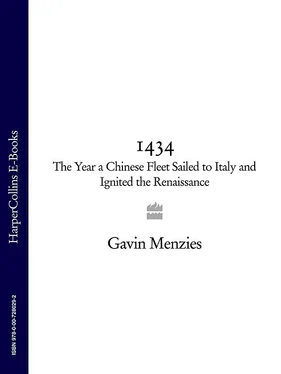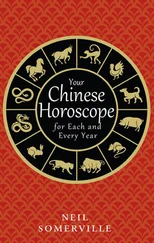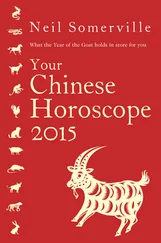Each month, a wealth of evidence comes to our website from sources in about 120 different countries. Taken together, the evidence, which includes the wrecks of Chinese junks in distant waters, has convinced me that my original estimate of the size of Zheng He’s fleet—some one hundred ships—was far too low.
Over the past three years, two researchers, Professor Xi Longfei and Dr. Sally Church, have found references in the Ming Shi-lu to the number of junks built in the years 1403 to 1419. The figures are subject to interpretation, particularly with regard to the number that can be assigned specifically to Zheng He’s fleets. But it seems the low estimate of the size of Zheng He’s fleets is as follows: 249 ships completed in 1407 “in preparation for sending embassies to the Western Oceans”; plus five oceangoing ships built in 1404, which the Ming Shi-lu explicitly states were ordered because envoys would soon be sent abroad; plus 48 “Treasure ships” built in 1408 and another 41 built in 1419. That makes a total of 343 ships constructed for Zheng He’s voyages. 9
A middle estimate would include “converted” ships, the purpose of which is unspecified in the Ming Shi-lu . Of these, there were 188 in 1403; 80 in early November 1405; 13 in late November 1407; 33 in 1408; and 61 in 1413. Adding these converted ships to the 343 ships described above would give Zheng He a total of 718 ships.
The high estimate includes 1,180 haizhou , ordered in 1405, whose purpose is unspecified, and two orders of haifeng chuan (ocean wind ships)—61 in 1412 and the same number again in 1413. All together, that would mean a fleet of 2,020 ships out of a total construction program of 2,726. Even at this high estimate, Zheng He’s fleet would still have been smaller than Kublai Khan’s, though of better quality.
Based on Camões’s account of the Chinese fleet that reached Calicut eighty years before Vasco da Gama, my guess is that Zheng He had at his disposal more than 1,000 ships. “More than eight hundred sail of large and small ships came to India from the ports of Malacca and China and the Lequeos (Ryuku) Islands with people of many nations and all laden with merchandise of great value which they brought for sale…they were so numerous that they filled the country and settled as dwellers in all of the towns of the sea coast.” 10
The emperor’s massive ship-building program was accompanied by major improvements in the junks’ construction. Professor Pan Biao of the College of Wood Science and Technology of Nanjing Forestry University has carried out groundbreaking work into the types of timber found in the Nanjing shipyards where the trea sure ships were built. About 80 percent of the material was pine, 11 percent hardwoods other than teak, and 5.5 percent teak.
The pine—soft, humidity-and decay-resistant, and long used for building both houses and ships—was largely from south China. Teak, which is hard, heavy, and resistant to insect attack, is ideal for main frames. However, it was foreign to China and a new material for Chinese shipbuilders.
What astonished Professor Pan Biao was the volume of hardwood and teak that was imported. “Before Zheng He, hardwood had never left its countries of origin in a single step,” he said. “But during Zheng He’s voyages, and in the one or two hundred years following his voyages, hardwood was not only massively used in shipbuilding but was also brought into Southeast Asia and transplanted there for the first time.” Professor Pan Biao argues that Zheng He’s voyages contributed greatly to large-scale international trade in hardwood and to the remarkable progress in Southeast Asia’s shipbuilding industry. 11
In each of the years 1406, 1408, 1418, and 1432, fleets of a hundred or more Chinese vessels spent lengthy periods refitting in the ports of East Java. The Chinese who settled in Java played a major part in the development of Javanese shipbuilding. Professor Anthony Reid suggests that the flowering of Javanese shipbuilding in the fifteenth century was due to “creative melding of Chinese and Javanese marine technology in the wake of Zheng He’s expeditions.” 12
The new building program in China, aided by better timber and the huge refitting endeavor in Java, would gradually have improved the quality of Zheng He’s fleets. We know from detailed research initiated by Kenzo Hayashida that Kublai Khan’s fleets, wrecked in Tokushima Bay in Japan in 1281, were doomed as much by the poor quality of their construction as by the fury of the kamikaze winds.
With their superior wood and construction, Zheng He’s ships would be capable of crossing the stormiest oceans. However, the scale of these vast fleets would have created enormous command and control problems, as I can attest from personal experience.
In late 1968, before taking command of HMS Rorqual , I was appointed operations officer to the staff of Admiral Griffin, who then commanded the Royal Navy’s Far East Fleet. My duties were the day-to-day operation of the fleet—an aircraft carrier, fuel tanker, supply ships, destroyers, frigates, and submarines. 13I quickly learned just how difficult it is to control a fleet of twenty ships, not least in the sudden squalls of the South China Sea, which can reduce visibility to a few yards. Changes in visibility constitute a threat, which requires that the fleet be continuously repositioned.
This experience was repeated when I was in command of HMS Rorqual . By tradition, the first Royal Navy vessel on the scene of a sunken submarine takes charge of the recovery operation, irrespective of the seniority of her captain. When HMS Onslaught was simulating a sunken submarine on the seabed, the Rorqual was the first ship there. 14So, for a brief period, I exercised operational control of the British Far East Fleet, a task that led me to greatly appreciate the value of wireless and satellite communications.
Zheng He’s admirals had no such technology. Instead, they would have relied on bells, gongs, drums, carrier pigeons, and fireworks to coordinate their movements. Consequently, they would have been unable effectively to control more than perhaps twenty junks of various types and capabilities, such as trea sure ships supplied by water carriers and grain ships protected by fighting ships. For a short period, in calm seas with unchanging good visibility, they might have been able to control as many as fifty ships. But these conditions do not last long at sea. As the weather changes, so does the threat. Capital ships, such as Zheng He’s trea sure ships, are protected more closely inshore than in the open ocean. Likewise, the threat of pirates requires a different disposition than that required for landing troops on an exposed beach.
With approximately one thousand ships under his overall command, Zheng He probably would have appointed at least twenty, and quite possibly fifty, rear admirals. On his final voyage, I believe there were four full admirals (Zheng He, Wang Jinghong, Hong Bao, and Zhou Man), eight vice admirals (Wang Heng, Hou Xian, Li Xing, Wu Zhong, Yang Zhen, Zhang Da, Zhu Liang, Zhu Zhen), and another twelve rear admirals 15in command of a total of twenty-four fleets, which is the minimum number of fleets I would expect given the number of ships.
In my opinion, the case for broad-based leadership of the fleets is reflected in the Taicang stele, which uses the first-person plural to describe the command of men and ships. (“Each time we have commanded several tens of thousands of government soldiers and more than a hundred oceangoing vessels.”) The implication is that Zheng He is acting in concert with his team of admirals.
The scope of the shipbuilding program—more than 2,700 ships—undermines the notion that Zheng He commanded just one fleet of a hundred oceangoing vessels. However, a single fleet of a thousand junks would have been impossible to control. Chinese rec ords listing dates for outbound and returning voyages make it clear that different fleets departed and returned under different commanders often years apart.
Читать дальше












